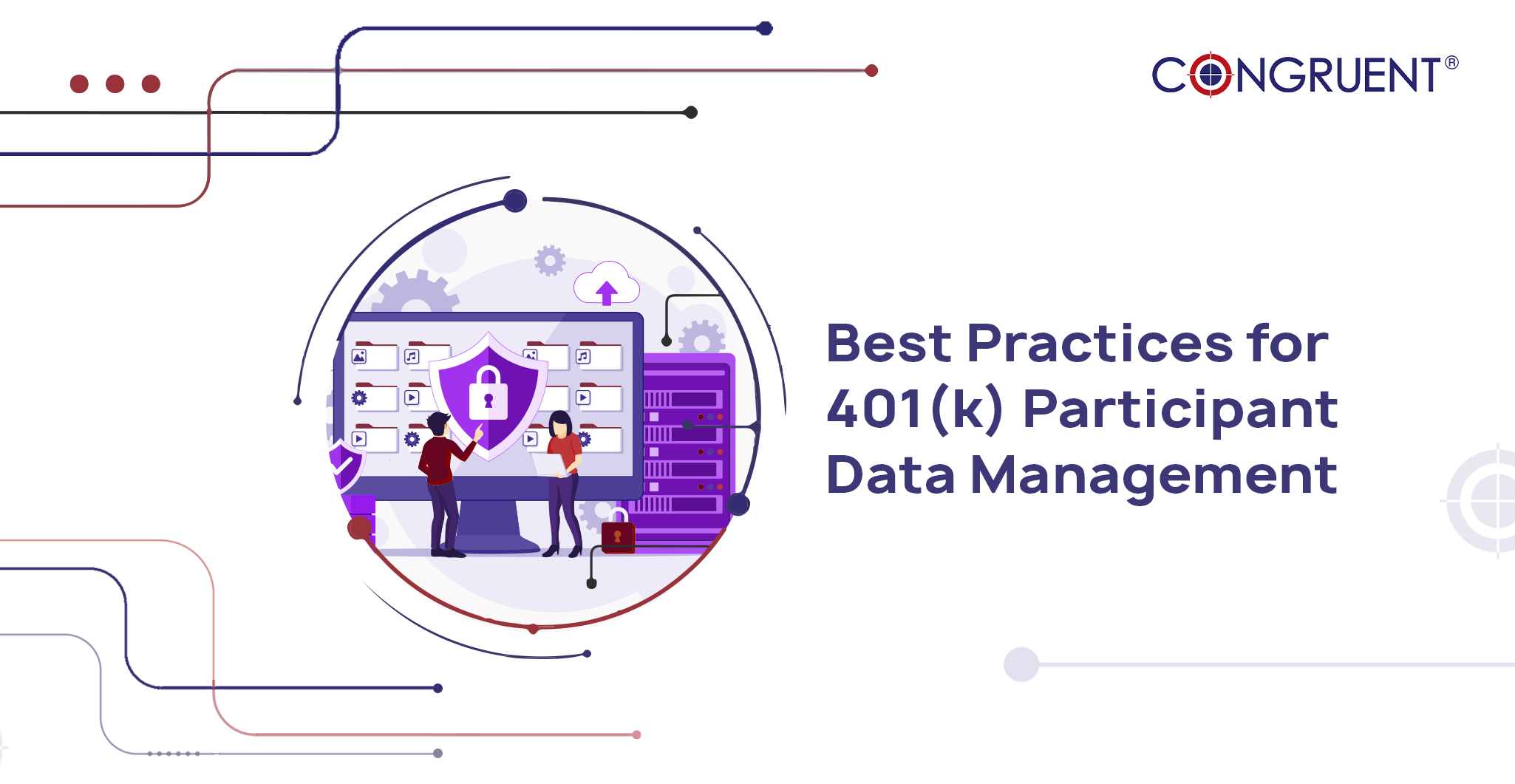
Efficient recordkeeping and participant data management are essential to a retirement plan. Plan administrators need to ensure that the data associated with their plan is accurate, compliant, and secure throughout the lifespan of the retirement plan. By implementing best practices for managing participant data, plan administrators can save time, expense, and stress while limiting potential liability in an audit situation.
Data security and management have become critical in the retirement plan industry in today’s digital era. A single data breach can jeopardize countless retirement savings, compromising their financial security and trust in the system. This article outlines best practices for 401(K) participant data management to ensure that retirement plans are secure, effective, and profitable.
The importance of participant data management
The US retirement plan industry is undergoing several changes with increasing participants, rising regulatory requirements, and growing fee pressures. Amidst these changes and increasing data complexity, the importance of data management has become even more apparent.
By implementing comprehensive data management processes, 401k plan administrators can maximize efficiency and accuracy while minimizing participant risk. To remain competitive, retirement plan sponsors and administrators must ensure that their data management techniques are up-to-date.
It ensures improved compliance with ERISA guidelines and reduces the risk of data breaches. Additionally, it helps maintain the accuracy of participant records, such as contributions and withdrawals. Besides increasing efficiency in responding to participant requests, it potentially lowers audit costs.
Best practices for managing 401(k) participant data
Managing participant data helps plan administrators save time and effort while ensuring accuracy and compliance. Keep up with the unique challenges of 401(k) plans by following these best practices:
1. Ensuring data accuracy and security
Errors in participant data can lead to miscalculations in retirement savings, incorrect distributions, and various legal complications. It is critical to ensure that participant data is always accurate and secure. Plan administrators must establish protocols for accurate data entry and verification. It includes using automated data validation tools and conducting regular audits to maintain data accuracy.
2. Employing comprehensive data management systems
Efficient data management systems are vital for storing, organizing, and protecting sensitive participant information. Retirement administration software tools, such as CORE Mapper, offered by Congruent Solutions, can help streamline data management. It helps plan administrators organize, store, retrieve, and use participant data effectively. The tool uses AI and ML to address the pain points of recordkeepers and retirement plan administrators.
3. Regularly monitoring and updating records
Monitoring and updating participant records ensure that plans remain compliant with regulations and provide accurate information to participants. It is vital to review participant data regularly to ensure it is up-to-date and accurate. Periodic data reviews are essential for verifying and correcting errors and identifying patterns that may indicate fraudulent activities.
4. Effective Communication Strategies
Transparent and timely communication is crucial for maintaining trust between plan administrators and participants, particularly during data breaches. Establishing clear communication channels, such as email notifications, web portals, and periodic statements, can help keep participants informed about their accounts and any relevant updates.
5. Prioritize Compliance and Legal Obligations
Adhering to applicable laws and regulations established by DOL and ERISA is essential for safeguarding participant data and avoiding costly fines and penalties. Plan administrators must regularly evaluate their data management processes to ensure compliance with evolving legal requirements.
Conclusion
Managing 401k participant data is critical to retirement plan administration. Plan administrators and recordkeepers should prioritize establishing and maintaining an effective data management system to ensure accuracy, compliance with legal requirements, and a positive participant experience. By leveraging tools like automated data feeds, streamlined processes, clear communication channels, and proactive oversight of legal obligations, retirement plan providers can ensure their data is organized and secure.
The CORE Mapper from Congruent Solutions provides inbuilt retirement industry rules, customizable workflows, reusable rule sets, and options for real-time or batch processing capabilities. It is a powerful tool for streamlining data validation and transformation of large-scale plans. Equipped with robust reporting capabilities, CORE Mapper is a data management system that can help you achieve compliance goals and better serve participants.
